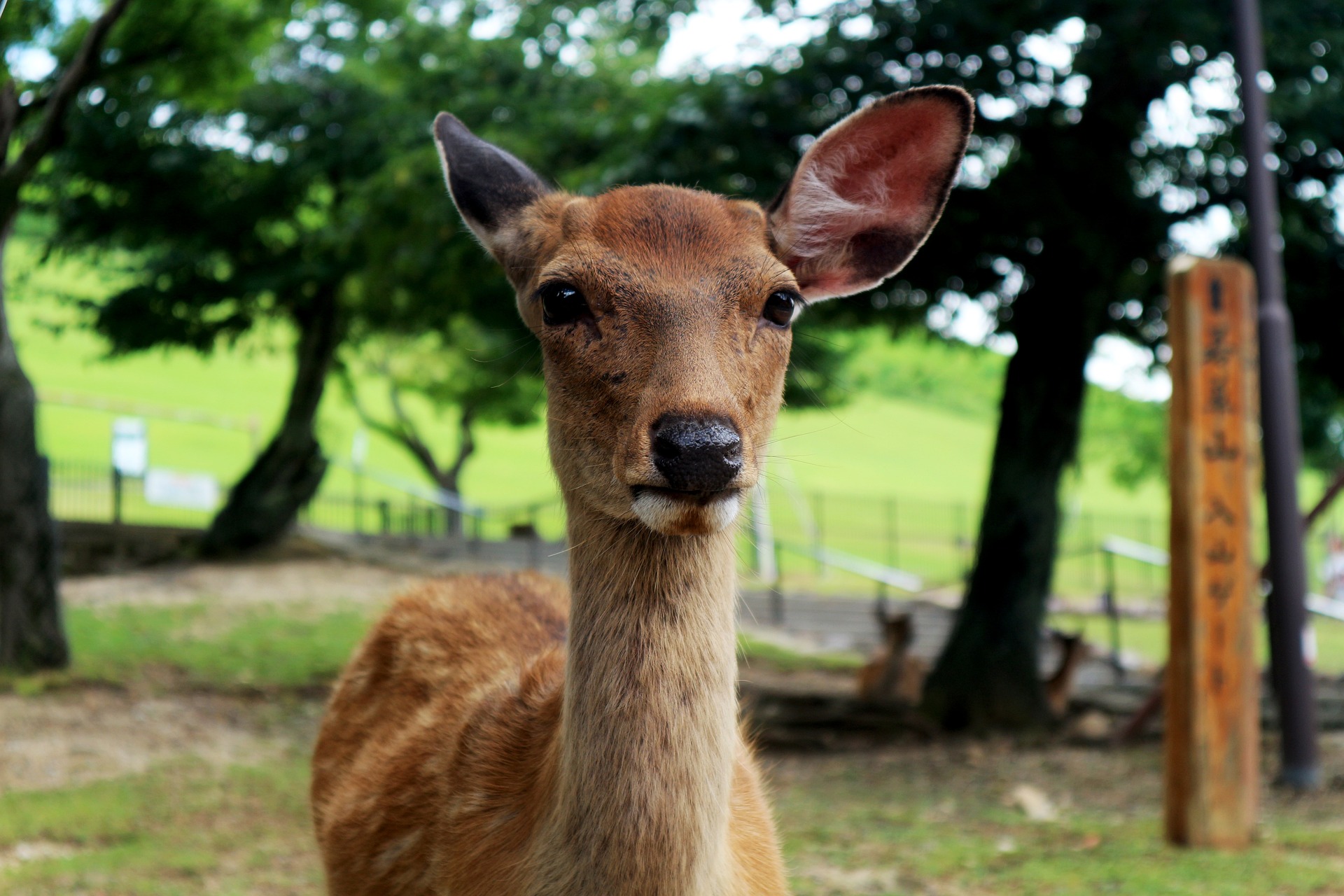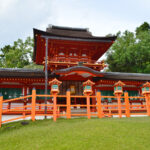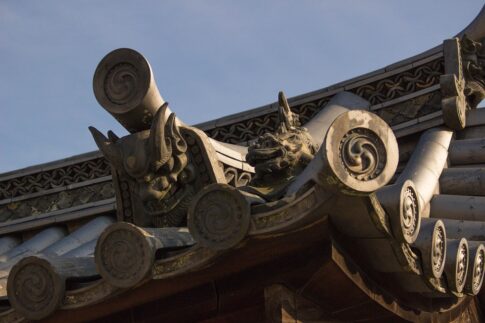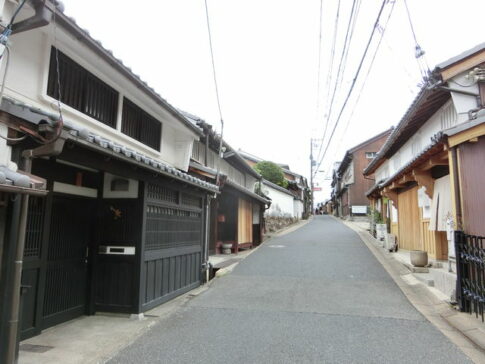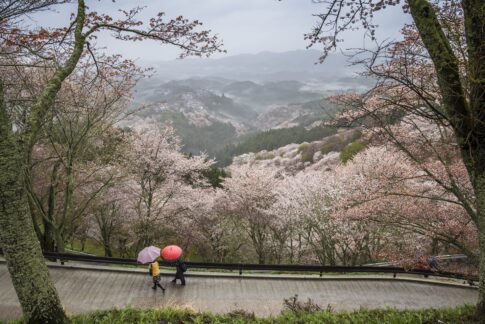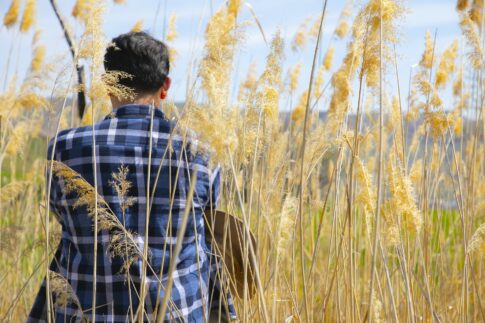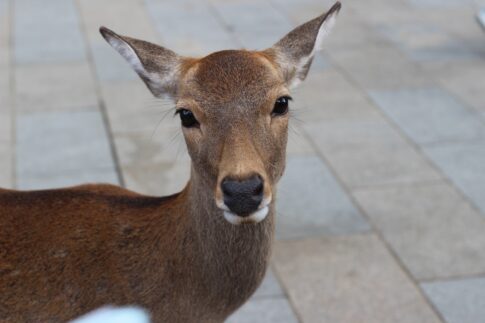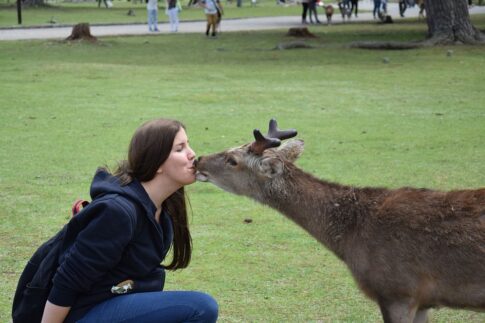Have you ever visited World Heritage Sites in Nara?
Nara Prefecture has many World Heritage Sites.
The “Historic Monuments of Ancient Nara” are facilities, historic sites, and natural monuments that were inscribed on the World Heritage List in December 1998.
The “Ancient Capital of Nara” consists of eight properties.
Today we will tell you about those places. Please take a tour of them!
① Why Nara’s Heritages were Registered
The reason why Nara’s heritages were registered is that it met following four of the six value criteria for cultural heritage.
It shows the development of art and technology born from international exchange.
During the Nara period, the Tempyo culture prospered, as a result of exchanges with China and Korea.
Architectural styles, capital construction, Chinese characters, new ideas of Buddhism, and dress all developed while learning from China and Korea.
Influences from Rome and Persia, far beyond the Silk Road, can also be included.
It shows significant evidence of culture and civilization.
The present-day city of Nara was the capital of ancient Japan.
In other words, as the center of the country, Nara City was the leader of the culture and civilization of Japan as a whole.
The Heijo Palace Site provides a glimpse into the urban planning of the capital during the Nara period and provides evidence of the capital’s prosperity.
The legacy of an important period in human history remains.
The Nara period was an important period in which the foundations of the Japanese nation and culture were established.
Emperor Shomu distributed national temples throughout Japan in order to build the nation through Buddhism.
The center of these temples is Todai-ji Temple, which still remains today.
The Great Buddha of Todai-ji Temple represents his wish to unite the country.
The heritage of Nara City tells the story of “the beginning of Japan” as a nation.
Closely related to faiths, traditions, etc.
Faiths and traditions around the world have universal value.
The heritage of Nara City is closely linked to Shintoism, Buddhism, and other beliefs of the Japanese people.
Nara City World Heritage sites are not only shrines, temples, and other structures, but are also indispensable as places where traditional events that have continued for hundreds of years and would have been handed down.
② Nara Itself is World Heritages Site
The entire city of Nara is a World Heritage Site.
The “Ancient Capital of Nara” is unique in that it is not a single facility that is registered as a World Heritage Site, but rather the entire eight properties are registered as a single cultural heritage.
The World Heritage Sites in Nara City tell the story of one value for the entire city.
③ The names of Nara’s World Heritage Sites
Todai-ji Temple
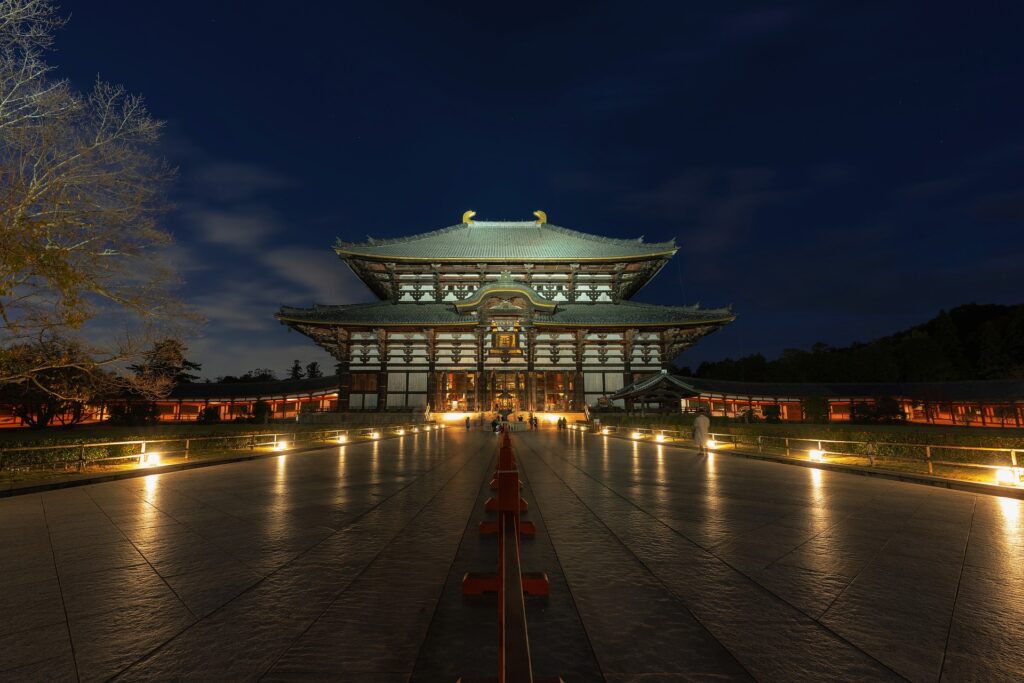
Known as the Great Buddha of Nara, this representative temple of the Nara period was built in Heijo-kyo, the capital of Nara, as the center of all national temples.
The Great Buddha Hall is one of the largest wooden structures in the world.
In 743 (Tempyo 15), Emperor Shomu issued an imperial decree for the construction of the Rushana Daibutsu (Great Buddha), wishing for the prosperity of all living beings.
The Great Buddha was showed to the public in the 4th year of Tempyo Shoho (752). Since then, pagodas were built one after another, and it took nearly 40 years to complete the temple complex.
Even after the capital moved to another location, the temple continued to be a place of worship for the Daibutsu (Great Buddha).
However, in 1180, the Great Buddha Hall and most of the temple buildings were lost to the forces of Taira Shigehira.
The temple was rebuilt by Shigen Shonin, but was destroyed by fire again in 1567 during the Miyoshi-Matsunaga War, leaving only a few buildings.
Most of the present buildings were rebuilt during the Edo period by Priest Kokei and others, but the Hokke-do, Tenjimon gate, Nandaimon gate, and other buildings are national treasures representing their respective periods.
The temple still retains many cultural assets, including Hokke-do, Tenjimon, Nandaimon, and other national treasures representing various periods of Japanese history.
Yakushi-ji Temple
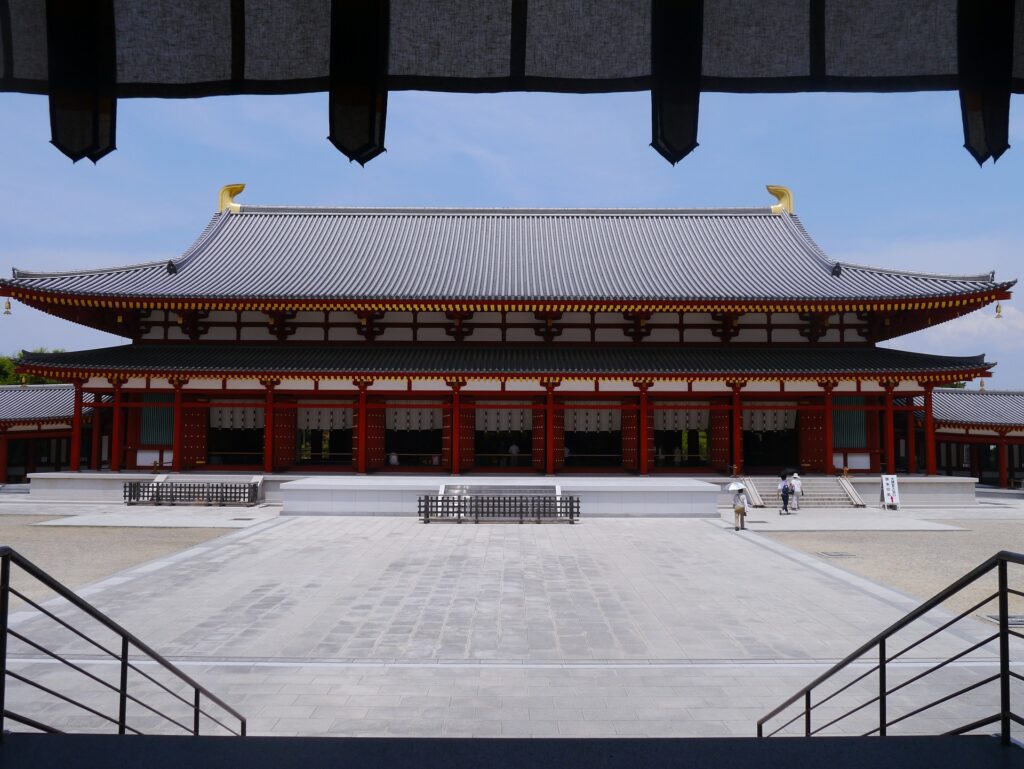
It was built in the Fujiwara-kyo capital after Emperor Moto’s accession to the throne.
The temple was moved to its current location in 718, when the capital was relocated to Heijo.
The temple is known as “Yakushi-ji-style temple layout,” the first such layout in Japan, with Kondo (main hall) dedicated to the three images of Yakushi, the principal image, in the center and two towers on the east and west sides of the building.
The main feature of this layout was the “Ryugu-zukuri” style, in which the towers had a grandiose appearance with a mokoshi (a floor for each level of the building).
However, the magnificent pagodas were destroyed by fire one after another, and the only remaining structure from the time of its construction is the East Pagoda (National Treasure).
After that, thanks to many years of sutra chanting, the Kondo was rebuilt in 1976, the West Pagoda in 1981, and the Chumon gate, corridors, and Genjo Sanzoin temple complex were restored and constructed.
The magnificent Hakuho temple complex from the time of its foundation was restored.
In 1998, Yakushi-ji Temple, the head temple of the Hosso sect of Buddhism, was registered as a UNESCO World Heritage Site as one of the components of “Cultural Properties of Ancient Nara”.
Recently, a 12-year total dismantling and repair of the national treasure, the East Pagoda, was completed in February 2021.
The pagoda was restored to its beautiful form, nicknamed “frozen music.
Along with the Hakuho temple complex, Yakushi-ji Temple has inherited many cultural assets, including the National Treasure Yakushi Sanzonzon (three images of Yakushi), and continues to transmit prayers that have continued for 1,300 years.
Kasugataisha Shrine
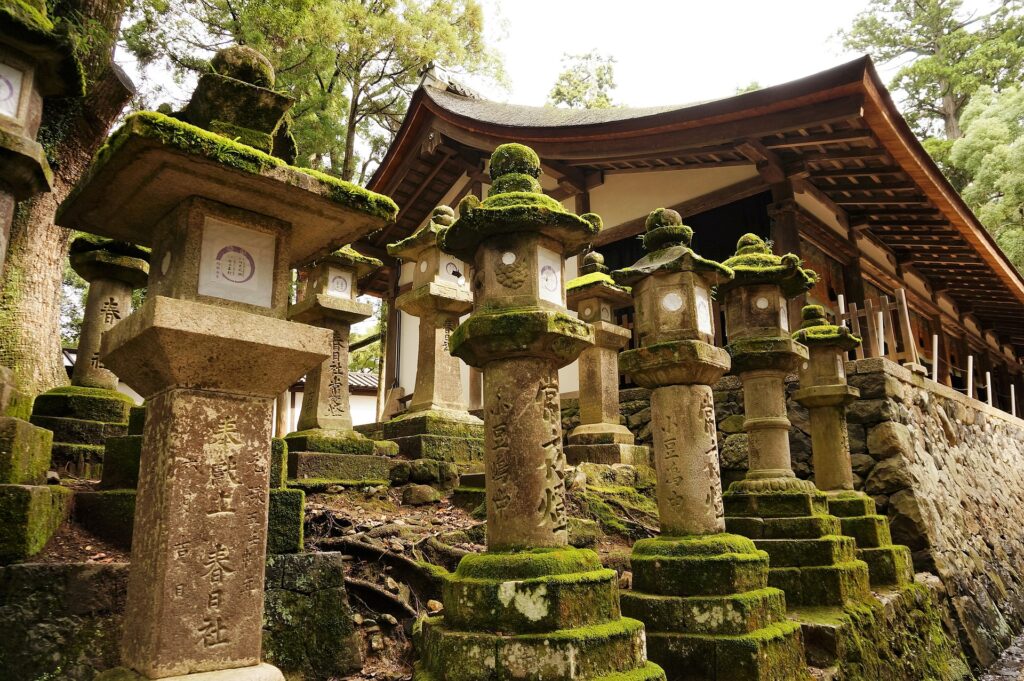
The shrine is said to have originated in the early Nara period (710-794), when Takemikazuchi no Mikoto of Kashima, Ibaraki Prefecture, was enshrined at the top of Mikasa Mountain to protect the Heijo-kyo Capital.
In 768 (Jingo-Keiun 2), by order of Emperor Shoutoku, the shrine was built at its present location, and Futsunushi no Mikoto from Katori, Chiba Prefecture, and Amenokoyane no Mikoto and Himegami from Hiraoka, Osaka Prefecture were also enshrined there.
In the Heian period (794-1185), the Imperial family and aristocrats began to visit Kasuga, and with the establishment of the ceremonial annual rebuilding of the shrine every 20 years, the main shrine and other buildings were enlarged to their present scale.
In the medieval period and later, the faith spread to samurai families and common people, and more than 3,000 branch shrines were built in various parts of Japan.
The shrine’s precincts are filled with stone lanterns and hanging lanterns of various shapes, known as “Mantoro,” many of which were donated by commoners, which shows the depth of the faith of the common people.
The “Mantoro” ritual, in which all the lanterns are lit on fire, is held every February on Setsubun day and August 14 and 15, attracting many worshippers with its fantastic beauty.
Nara Palace Site Historical Park
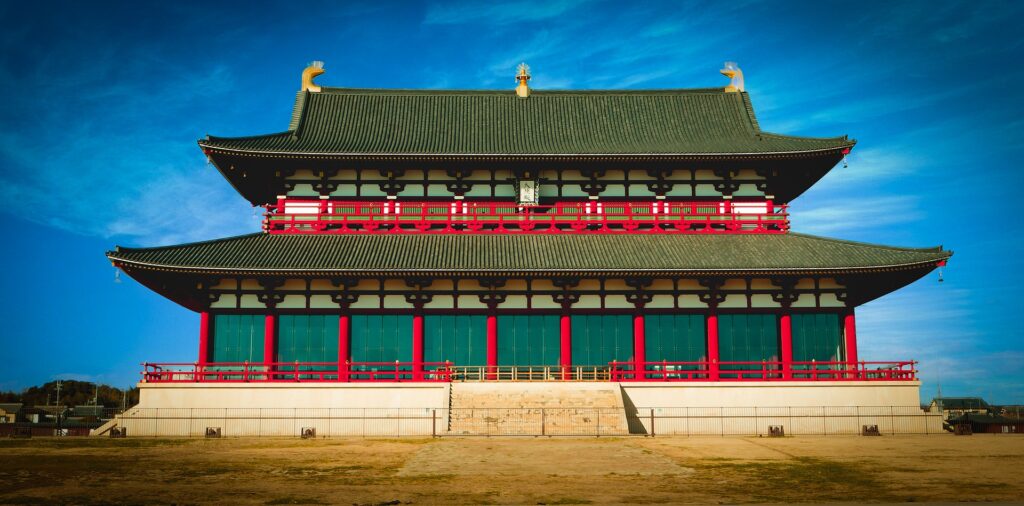
The Heijo-kyo Capital when the capital was moved from Fujiwara-kyo in 710 (Wado 3), was registered as a World Heritage site in 1998 (Heisei 10) as one of the components of “Cultural Properties of Ancient Nara”.
The site has been undergoing a long period of research and restoration, with the reconstruction of the primary Daigoku-den Hall, Suzakumon Gate, and other structures on a vast site measuring 1.3 km east to west and 1 km north to south.
Heijo Palace Site Historical Park (officially called “National Asuka and Heijo Palace Site Historical Park: Heijo Palace Site Area”).
The natural scenery that allows visitors to feel the changing of the seasons and the variety of events held throughout the year are also highlights of the park.
Toshodai-ji Temple
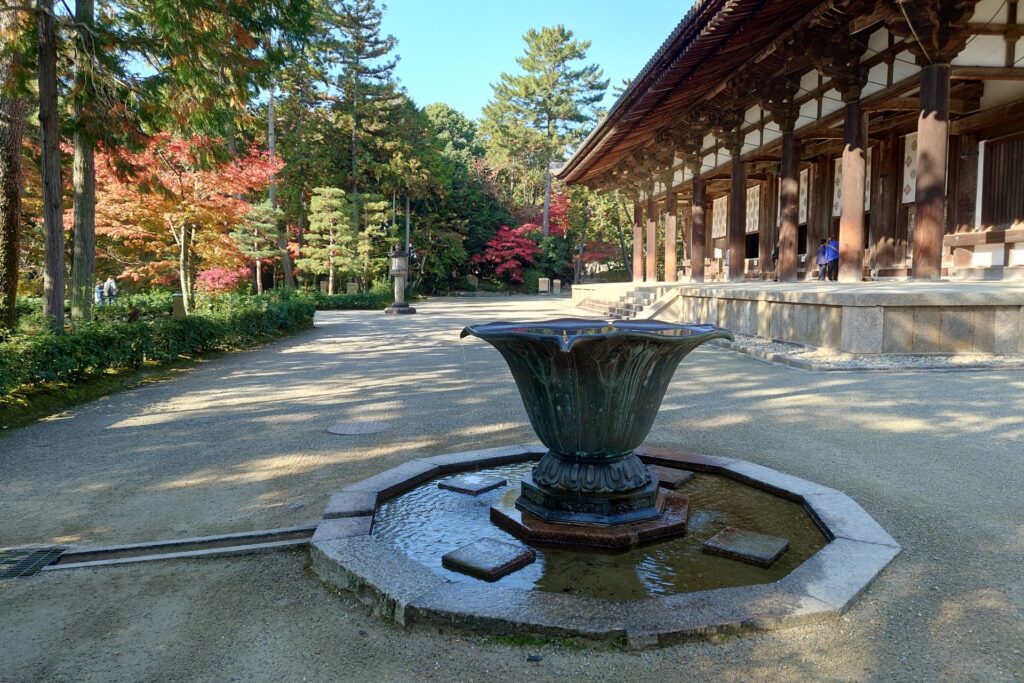
It was built by the Tang Priest Ganjin Wajo, who came to Japan at the invitation of Emperor Shomu and after much hardship.
After his retirement from Todaiji, he was given the former residence of the late Prince Nittabe (the seventh prince of Emperor Temmu), which he called “Tangyulshoso” and used as a place for teaching and learning.
Eventually, supporters of Ganjin Wajo donated apartments and lodgings, and a storehouse, dining hall, lecture hall, and temporary kondo (hall for enshrining the principal image of the Buddha) were built.
The entire temple complex was completed in the early Heian period (794-1185), at which time the name was changed from “Tangyulshodai” to “Toshodai-ji.
Gango-ji Temple
Its predecessor was Hokoji Temple (Asukadera Temple/Asuka Village), established by Soga Umako at the end of the 6th century, but it was moved to its current location with the relocation of the capital to Heijo, and renamed Ganokoji Temple.
The temple was once one of the seven largest temples in the southern part of Nara, and occupied the southeastern part of what is now Nara City.
The vast precincts of the temple were lined with a main hall, a lecture hall, a five-story pagoda, and priests’ quarters, but by the mid-Heian period, the temple’s power had waned.
Today, only a corner of the monks’ quarters remains.
Gokurakudo was part of the former monk’s quarters of Gonko-ji Temple, and was converted into Gokurakudo (National Treasure) and a Zen room (National Treasure) in the Kamakura period (1192-1333).
Tiles from the Asuka and Nara periods still exist on the roof.
The temple has been worshipped by the common people since the Middle Ages, and countless stone Buddhas and folk artifacts have been discovered on the temple grounds.
In the Hall of the Law, a wooden five-storied small pagoda from the Nara period (National Treasure), a wooden seated statue of Amida Nyorai, materials on the beliefs of the common people in the Middle Ages (all important national treasures), and many other items are enshrined.
Kohfuku-ji Temple
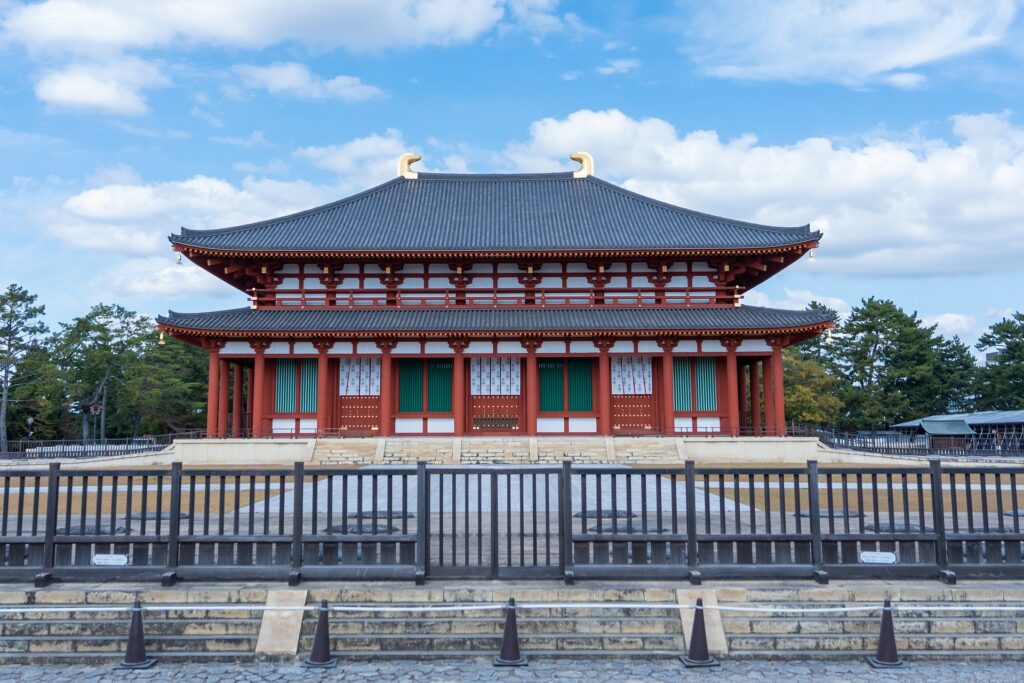
Among the Seven Great Temples of the Southern Capital, this temple developed most closely connected with the city of Nara.
In 710 (Wado 3), Fujiwara Fuhito relocated the former Umayasaka-dera Temple from Asuka to Heijo-kyo, and as the Fujiwara clan’s clan temple, the temple expanded its influence with the rise of the Fujiwara clan.
At its peak, the temple was lined with numerous pagodas and monks’ quarters.
Under the influence of the syncretism of Shintoism and Buddhism, the temple became one with Kasuga Shrine, and at times, it even had its own priests and soldiers to appeal to the Imperial Court.
In 1180 (Jisho 4), the Heike clan burned down most of the halls, but they were soon rebuilt.
In the Kamakura period (1185-1333), the Yamato family was in power as the Yamato governor and practically controlled the whole Yamato region.
Some of the buildings from the Kamakura period and onward remain, and within the spacious precincts of the temple are the Higashikondo, Chukondo, Kitaendo, Minami-endo, five-story pagoda, three-story pagoda, Oyuya, Ogodo, National Treasure Hall, and many treasures from the Tenpyo and Kamakura periods are preserved in the Buddhist sculptures. (The Chukondo was completed in 2018.
Mount Kasuga Primeval Forest
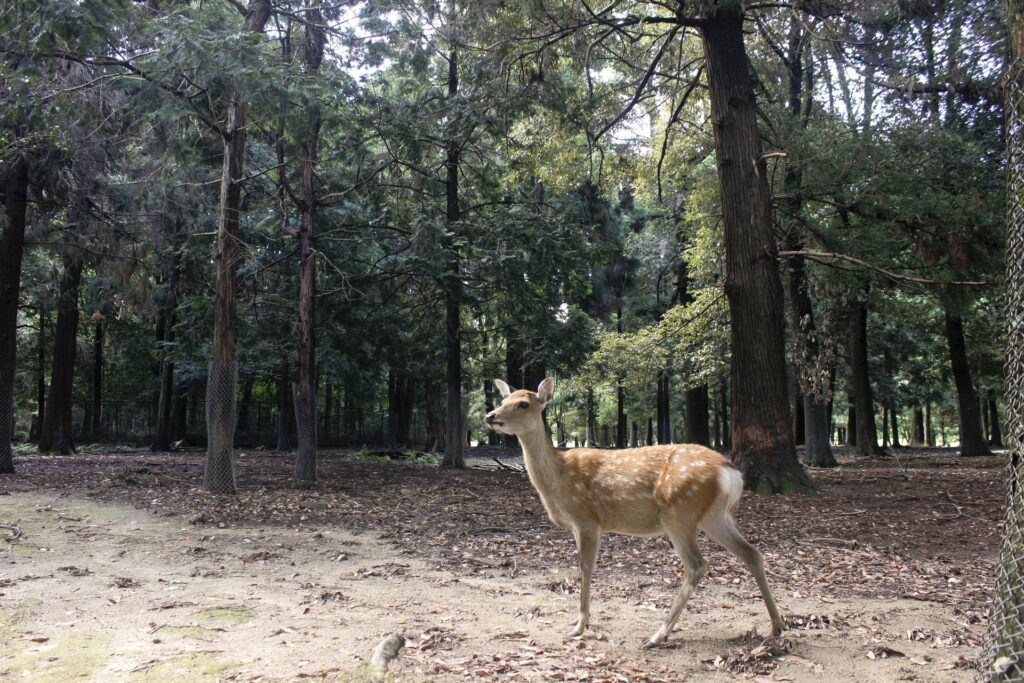
Kasuga is a primeval evergreen broadleaf forest composed mainly of oak and shii trees, as logging was prohibited for more than 1,000 years as the sacred mountain of the Kasuga Grand Shrine.
The mountain, which is dark even during the day, is home to rare animals such as the tree frog, the Japanese fire-bellied tree frog, and the Kasumi salamander.
It was designated as a special natural monument in 1955 and registered as a World Heritage site in 1998.
④ The Protection of World Heritages Sites is also Heritage
World Heritage Site registration recognizes efforts to protect heritage.
Even before Nara City was registered as a World Heritage site, rules were established in city planning, and Nara citizens have been protecting their historical heritage with their own hands.
It is a matter of pride that the city has made voluntary efforts to protect the heritage, rather than taking the World Heritage registration as an opportunity to do so.
Nara City has made efforts to protect World Heritage Sites.
In addition to the buffer zones required for World Heritage nomination, Nara City has established its own Historic Environment Coordination Zones (Harmony Zones) to harmonize environmental preservation with urban development.
Harmony Zones are established between buffer zones to protect the landscape of the wider area.
Summary
We explained Nara’s World Heritages Sites.
Since there are eight locations, it is a good idea to stay overnight and visit them in a few days!
